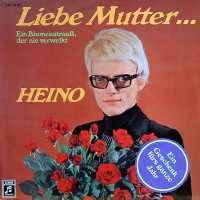How to explain the extensive popularity of German folksinger Heino to someone unfamiliar with that country's culture? Imagine hoards of adoring fans, from children to grandparents, going gaga over Elvis. Then in Elvis' place, substitute another artist who goes by a single moniker, a 60-something senior citizen who clads himself in vinyl rectangular glasses and blond hair that resembles an albino. His voice is deep, the deepest baritone imaginable, when he belts out his hit polkas and marches.
Heino's popularity is starting to spread outside the country's borders and even across the Atlantic. He is not meant as a joke, yet sometimes references are made to him as such, despite the fact that he is one of his country's most popular singers. In Heino's homeland they call him an "uberstar." His record sales there have surpassed the Beatles'. To mark the occasion of the singer's 60th birthday, German prime time television hosted a 90-minute special and titled it Der Goldene Heino, which translated means The Golden Heino.
Cults have sprung up, one of which (the Cosmic Order of Heino) believes that otherworldly beings inserted a chip in the singer's brain, a device that is somehow tied to humanity's well-being. One of his album covers sports a shot of the singer in what could be described as '60s-style garb: peg pants and turtlenecks.
Heino's real name is Heinz Georg Kramm. His father passed away during the '40s. He studied the accordion in his youth while apprenticing to become a baker, practicing his skills in Dusseldorf's finer restaurants. He made his first professional appearance in 1955 and ditched baking to become a full-time professional singer in 1960. In 1965, agent Ralf Bendix discovered him and Heino soon signed a recording deal. His first single topped sales of 100,000 copies. His next effort, titled "Wenn die Bunten Fahnen Weh'n," went gold.
With about four decades of entertaining to his credit, Heino continues to perform in concert and on tour. He also runs his own eatery, the Heino Rathaus-Cafe, which he established in Bad Munstereifel in 1996. His wife, Hannelore, is Princess of Auersperg. In 1984, she collaborated with Heino on Die Liebe Ist das Gold des Lebens.
Source: http://www.allmusic.com/cg/amg.dll?p=amg&sql=11:3zfrxq85ldke~T1
